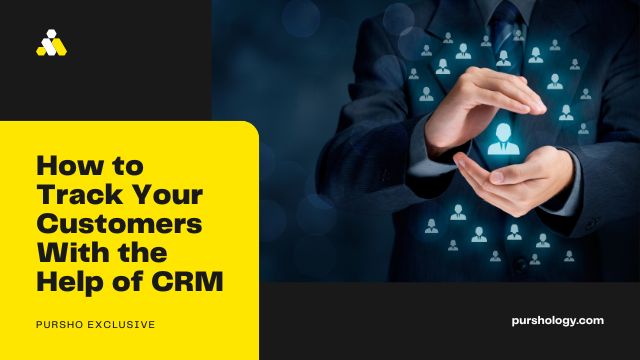Are you struggling to keep track of your customers? Well, you’re not alone. With the help of CRM (customer relationship management) software, you can easily track your customers and their interactions with your business. In this blog post, we’ll show you how to use CRM to your advantage.
Defining your customer base
A customer relationship management (CRM) system is a tool used by businesses to manage and store customer data. It is important to have a CRM system in place so you can track your customers and better understand their needs. There are a few different ways you can define your customer base. The first is geography, which is useful if you have customers in different parts of the world. The second way is by industry, which is helpful if you sell to different types of businesses. Finally, you can also segment your customers by specific criteria, such as purchasing history or buying habits. Once you have defined your customer base, you can start tracking customer data with a CRM system. This data can include contact information, communication history, purchase history, and more. Having this data stored in one place will help you better understand your customers and provide them with better service.
Identifying your customer acquisition channels
In order to identify your customer acquisition channels, you need to first understand how your customers find you and what journey they take from becoming aware of your company to make a purchase. Once you have this information, you can determine which channels are most effective in acquiring new customers. There are a number of ways to track your customer acquisition channels, but one of the most effective is through the use of customer relationship management (CRM) software. CRM software gives you the ability to track every interaction your customers have with your company, from their first point of contact to their most recent purchase. This information can be invaluable in identifying which channels are most effective in acquiring new customers. If you don’t have CRM software, there are a number of other ways to track your customer acquisition channels. One way is to simply ask your customers how they found out about your company. Another way is to track the marketing campaigns that you are running and see which ones are generating the most leads.
Creating customer profiles
In order to track your customers effectively, you need to create customer profiles. Customer profiling is the process of gathering and analyzing data about your customers in order to better understand their needs and buying habits. There are a number of different ways to collect customer data, but the most common methods are through customer surveys, online forms, and cookies. Once you have this data, you can begin to create customer profiles. When creating customer profiles, it is important to consider the following: -Demographics: What is the customer’s age, gender, location, and so on? -Buying habits: What products or services does the customer buy? How often do they make purchases? -Motivations: What motivates the customer to make a purchase? -Lifestyle: What is the customer’s lifestyle like? Are they married or single? Do they have children? What is their job like?
Implementing a CRM system
CRM, or customer relationship management, is a system designed to help businesses track and manage their customer interactions. By using a CRM system, businesses can collect data about their customers and use that data to improve their sales and marketing efforts. There are many different CRM systems on the market, and choosing the right one for your business can be a challenge. To help you make the best decision for your business, we’ve put together a list of things to consider when choosing a CRM system. -What features do you need? -How easy is the system to use? -How much will it cost? -Is the system scalable? -What kind of support does the vendor offer?
Tracking customer interactions
In order to track your customers and their interactions, you will need to use a customer relationship management (CRM) system. This type of system can help you track various customer interactions, such as phone calls, emails, and meetings. By tracking these interactions, you will be able to better understand your customers and their needs. Additionally, a CRM system can help you automate some of your customer interactions, such as sending out automated emails or schedule follow-up phone calls.
Analyzing customer data
In order to properly track your customers, you need to first analyze their data. This data can come from a variety of sources, such as surveys, customer service logs, and sales reports. Once you have this data, you need to identify patterns and trends. This can be a difficult task, but there are a few ways to make it easier. First, try to break down your data by customer type. This will help you to see if there are any trends specific to a certain type of customer. For example, you might notice that repeat customers tend to spend more money than new customers. Second, try to break down your data by time period. This will help you to see if there are any seasonal trends in your customer base. For example, you might notice that people tend to spend more money during the holidays. Third, try to break down your data by geography. This will help you to see if there are any regional trends in your customer base. For example, you might notice that people in certain parts of the country tend to spend more money than people in other parts of the country. Once you have analyzed your customer data, you can start to track your customers more effectively. There are a number of different CRM software programs that can help you with this task. These programs will allow you to keep track of important information about your customers, such as contact information, purchase history, and preferences.
Improving customer retention
There are a number of ways to improve customer retention with the help of CRM. In this guide, we will explore some of the most effective methods for improving customer retention and ensuring that your customers remain happy and engaged with your business. One of the most important things you can do to improve customer retention is to make sure that you are constantly collecting data about your customers. This data can be used to segment your customers and target them with specific retention strategies. Additionally, this data can be used to identify patterns in customer behavior, which can help you anticipate problems and take steps to prevent them. Another effective method for improving customer retention is to offer loyalty rewards or programs. These programs incentivize customers to continue doing business with you, as they know they will be rewarded for their loyalty. Additionally, these programs can help you collect valuable data about your customer’s preferences and behaviors. Finally, it is important to keep in mind that improving customer retention requires constant effort. You should always be looking for ways to improve the experience your customers have with your business, and you should never stop trying to find new and innovative ways to keep your customers engaged.
Measuring customer lifetime value
Calculating customer lifetime value can help you focus your resources on acquiring and retaining the most valuable customers. The lifetime value of a customer is the estimated net profit that a company will earn from that customer over the course of their relationship. There are a few different methods for calculating customer lifetime value, but the most common is to take the average customer’s purchase frequency, average spend per purchase, and gross margin per purchase, and then multiply those numbers by the number of years that the customer is expected to continue making purchases. You can use customer lifetime value to inform your marketing and sales strategies in a number of ways. For example, you can use it to set acquisition budgets, target high-value customers with specific offers or product bundles, or invest in retention initiatives for your most valuable customers. Measuring customer lifetime value can be complex, but it’s worth taking the time to calculate it accurately so that you can make data-informed decisions about how to grow your business.




